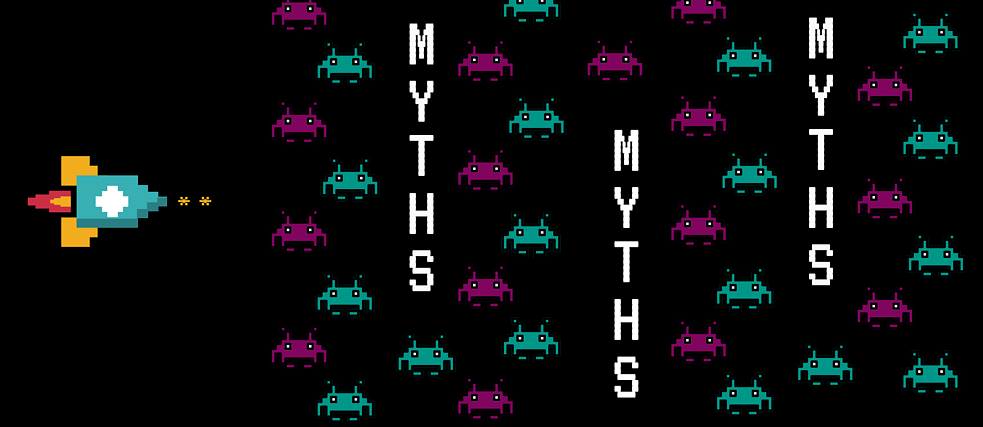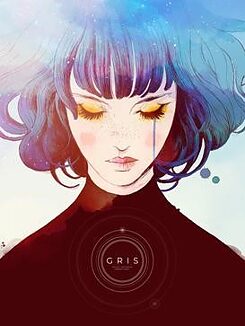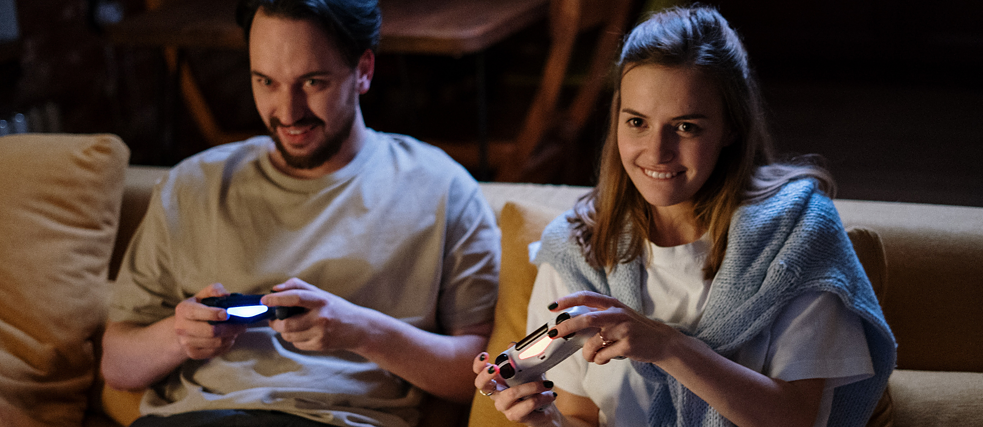Misconceptions No More
Busting Myths

Video games - love ‘em or hate ‘em, you can’t ignore ‘em! A source of memories, controversies, competition, legends, and myths! In this article, we explore and bust the myths in the video-games industry.
By Arjun Nair
1. Games & Health
“Don’t play video games for too long, they are bad for your eyes!” - These words should be familiar to any kid who has access to console, computer or smartphone these days. Video games have also been slammed for all sorts of physical and mental problems - and for good reason. But there is a flip side to this: video games can also be agents towards positive health.
 Nintendo Wii has sold nearly 102 million units since it's launch in 2006
| © Nintendo
Nintendo Wii has sold nearly 102 million units since it's launch in 2006
| © Nintendo
When Nintendo introduced the Wii game console, it did something that not many consoles before it hadn’t managed to - make playing games a physical activity.
 Just dance is a rhythm game where players try to mimic the moves of an on-screen dancer to score points.
| © Ubisoft
With games like Wii Tennis, Wii Boxing, and Wii Sports, the Wii actually made people sweat. Then there are games like Dance Dance Revolution and Just Dance, which make the player mimic the choreography, physically shake a leg - not just mash some buttons on a controller and burn calories.
Just dance is a rhythm game where players try to mimic the moves of an on-screen dancer to score points.
| © Ubisoft
With games like Wii Tennis, Wii Boxing, and Wii Sports, the Wii actually made people sweat. Then there are games like Dance Dance Revolution and Just Dance, which make the player mimic the choreography, physically shake a leg - not just mash some buttons on a controller and burn calories.
Can video games help people recover from disability?
In a fascinating talk at IGDC 2020, Subhasis Banerji of Synphne elucidated exactly how! “Gaming can walk a user through sequences of tasks, helping those who have been disabled for a long time, and retrain their brain on sequential tasks such as dressing, grooming, etc...”
And it’s not just fun and games. A 2018 study confirmed that video games helped US veterans deal with PTSD and substance abuse issues!
2. Women in Games
It’s a legend as old as video games themselves: Women don’t play video games.
And their characterization in video games as in-game characters themselves… well, let’s just say it’s as realistic as Barbie.
Let this myth be busted: In the US, women make up 41% of all gamers, while Germany avowals an amazing 48%!
Arjun Nair
 In the game Gris, the character deals with five stages of grief - denial, anger, bargaining, depression and acceptance.
| © Nomada Studio
Even in games, female characters are undergoing a radical shift. One of the most recognisable characters - Lara Croft of Tomb Raider fame - has undergone a transformation from the hypersexual girl to a more mature, gritty, and believable Lara Croft in the latest release: Shadow of the Tomb Raider.
In the game Gris, the character deals with five stages of grief - denial, anger, bargaining, depression and acceptance.
| © Nomada Studio
Even in games, female characters are undergoing a radical shift. One of the most recognisable characters - Lara Croft of Tomb Raider fame - has undergone a transformation from the hypersexual girl to a more mature, gritty, and believable Lara Croft in the latest release: Shadow of the Tomb Raider.
Of late, we see females take the reins. Gris, The Last of Us 2, Hellblade: Senua’s Sacrifice et al all feature strong, meaningful lead characters. Their appeal as interesting characters to play transcends gender boundaries and traditional storytelling mechanics (a.k.a “Rescue the princess”).
Even in the nascent Indian gaming industry, we witness women as leaders - a thing unheard of perhaps a decade ago. Shilpa Bhat, Vice President of 99 games, Arpita Kapoor, CEO of Mech Mocha, and Keerti Singh, co-founder of Hitwicket are showing us that things can and will change.
Fun Fact
Poornima Seetharaman, Lead Game Designer at Zynga, became the first Indian woman to enter the first-ever Global Women In Games Hall of Fame in 2020, an award given out every year to women who have made a difference in the global gaming industry.
3. Crunch & Burnout
Game development can often seem glamorous and exciting, and it is. But when deadlines loom, game developers often go into “crunch” mode: working 15+ hours a day (often with no overtime pay), often over weekends, just to get the game out of the door.
Taken for granted, it has led to issues involving health, relationships and general disillusionment with the industry and sometimes ‘burnout’ - fatigue caused by over-working or doing things repeatedly without progress.
 Anthem is an online multiplayer action role-playing sci-fi game that's been 7 years in the making.
| © Electronic Arts/ Bioware
This issue was brought to the forefront in spectacular fashion when the gaming industry giant Electronic Arts was sued in 2006 for failure to pay overtime.
Anthem is an online multiplayer action role-playing sci-fi game that's been 7 years in the making.
| © Electronic Arts/ Bioware
This issue was brought to the forefront in spectacular fashion when the gaming industry giant Electronic Arts was sued in 2006 for failure to pay overtime.
Fourteen years later, crunch thrives.
As perceptible for BioWare - makers of hits like Dragon Age, Mass Effect and Anthem – crunch took a toll on its staff and games. Employees reported feeling stressed, anxious, angry and depressed, so much so that some of them took “stress leave” - a doctor-mandated period of weeks or even months’ worth of vacation to recover.
Recently, CD Projekt’s CEO Adam Kiciński bolstered the crunch his team was going through in the development of Cyberpunk 2077. Slammed for poor performance on last-gen but still popular consoles like the PS4 and Xbox One, and buggy gameplay underscores the point that crunches don't automatically lead to better products. Sometimes, quite the opposite.
So, crunch is here to stay, and we have to live with it?
Not necessarily. Crunch may not always be avoidable, but it can be mitigated and managed better.
Akshay Bharadwaj, General Manager at Zynga India, has to say this about timelines and expectations: “The one aspect to actively avoid is artificial timelines, set as a method to enforce urgency versus real customer focused timelines.”
Another interesting point he mentions is setting clear goals and measuring results objectively to ensure teams know exactly what they are working on and the impact of the same. One of the tools to do so is OKR’s - Objectives and Key Results - a tool to help track progress, create alignment, and encourage engagement around measurable goals.
Fortunately, the industry has begun treating “crunch” as a disease and not just some symptom!


Comments
Comment